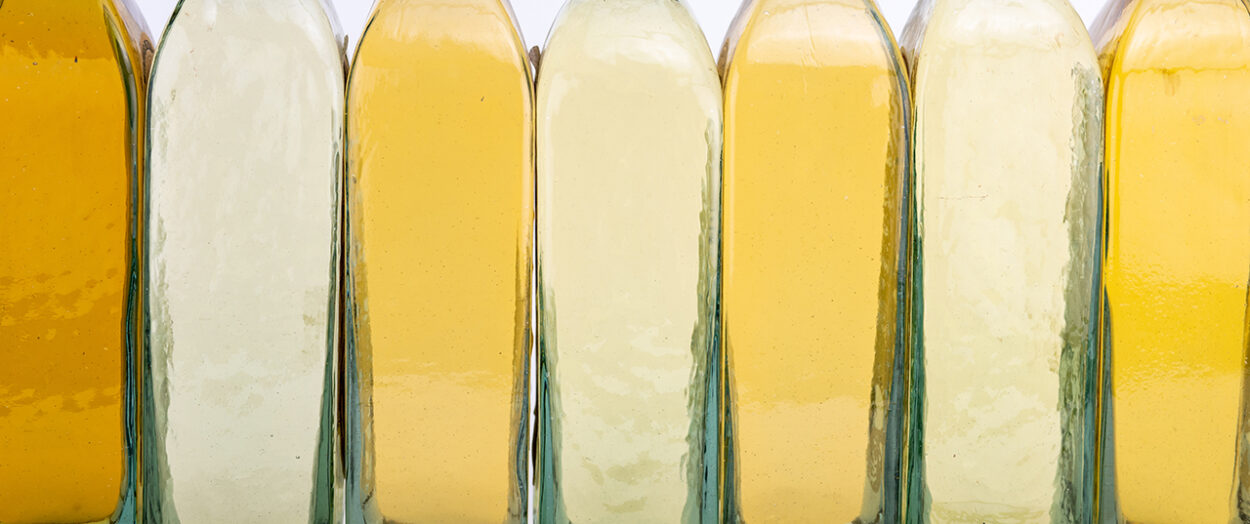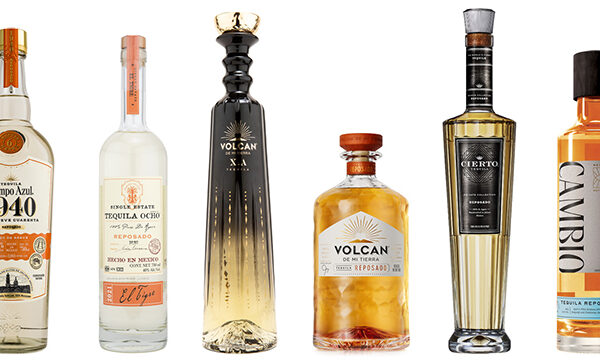How the tequila industry manages the unrealistic expectations put on a natural product
Have you ever ordered your favorite tequila and thought, “this tastes a little different than the last time I tried it”? If so, that’s probably a good thing. Tequila, like wine, is a natural product that will vary from batch to batch depending on many factors, such as the agaves used, the time of year it’s produced, different barrels used for aging, and even slight changes in yeast or distillation cuts.
But – understandably – the people who sell tequilas, and many consumers who are spending their hard-earned money on them, want to know exactly what they are getting.
“Customers definitely care about color and flavor remaining the same for most brands,” says Zack Romaya of Old Town Tequila in San Diego. “Complaints do happen when the customer feels like the flavor is different,” he adds.
This has led to a bit of a conundrum, because while a naturally produced tequila will be roughly 95% similar to previous batches, to get to that 100% similarity additives often have to be used.
So, for instance, if your barrels are a little more fatigued and don’t give a batch of tequila as much intense color as the previous one, you can add a little caramel coloring. In fact, this is probably why some tequila producers consider additives (or “abocantes”) like caramel coloring, oak extract, glycerin, and sweetener as standard tequila-making tools.
This points back to our own expectations as consumers. Do we want 100% consistency, or do we want to give producers a little leeway to produce natural tequilas that will differ over time?
“For us, consistency is in the quality of the tequilas we produce, not that they are exactly the same each time,” says Tequila Ocho Master Distiller Carlos Camarena, noting that only artificial, man-made products are exactly the same.
“This is nature,” he adds. “We highlight what we are given.”
Some producers, like Camarena, have been able to showcase production differences such as using different agaves, and producing at different times of year, to set the expectation that there will be slight changes in their tequilas.
Camarena’s Tequila Ocho lists the ranch where they harvested the agaves right on the label, while Tequila Fortaleza adds handwritten lot numbers to the back of each bottle, giving the consumer an idea of when that tequila was made.
“Each batch turns out with a slight variation, which is natural,” says Billy Erickson, Marketing Manager at Tequila Fortaleza. “And these small changes lead to awesome discussions among our fans as to which lots they prefer, and why. Sometimes we even get feedback on which ones to emulate, like the now infamous añejo lot 42/43,” he adds.
Showcasing variances can be exciting, but it’s not common. Most tequila producers strive for consistency because that’s what they believe consumers expect.
“We always try to educate the customer about tequila production and why differences should be expected,” says Romaya.
Given that getting the word out to the mass market will take some time, some producers are trying to bridge the gap between having a natural product and meeting consumers’ consistency expectations.
“Our Codigo 1530 Rosa is rested in wine barrels and has a light pink color that differs from batch to batch because the barrels give us something different each time,” says Ricardo Lona Martínez, Director of Operations for Codigo 1530.
“Consumers had questions about whether it was our Rosa or Reposado due to the variation, so we put it in a bottle with a colored bottom to help identify Rosa on a shelf. Rosa for us is a process, not a color,” he adds.
Hopefully, over time, more tequila drinkers will appreciate the difference.
What do you think? Is consistency important to you? Share your opinion, below.




I appreciate and admire producers that embrace the natural nuance from batch to batch. Part of the experience is the flavor profile in each bottle. Quality will expose itself to those who take the time to appreciate it.
We are Blanco drinkers but we prefer quality over consistency and the traditional/best methods of production without additives.
I grew up in the Caribbean and will draw a parallel: you can have different tasting oranges plucked from the same orange tree. I appreciate the varying tastes.
Likewise, I would rather have consistency in quality and production, over consistency in taste. Yes, I would like to know what I am getting as far as tastes goes, but if 95% of the taste remains, then that is excellent. I love what nature does.
I imagine that most of the readers of this blog are not the people looking for absolute consistency. That said, the bigger problem to me and all of my friends is the reverse: Tequila that DO add thing like coloring, glycerine, or whatever without actually disclosing it. The “100% pure agave” moniker is somewhat helpful here.
Scott – are you saying that “100% pure agave” on the label means no additives? If it were only that easy!
For the average consumer, I imagine consistency is forefront for them but I welcome the inconsistencies and authenticity natural tequila brings.
Great info!
The consistency that matters most to me is production method. I don’t mind a different flavor or aroma profile or differences in coloration. I want consistent quality and old school production methods.
The expectation of consistency really just showcases the lack of knowledge that so many consumers have regarding the products they purchase. This is true is almost everything we purchase but inevitable is natural products such as tequila, beer, wine, etc. I think producers should simply strive for high quality products. Appreciation of variation is under-appreciated!
Additive free is important to me as the true pure ingredients matter when I eat or drink. I make lovely meals amd even the same food does not have the same consistency. The production method and quality in ingredients is still the same. That is something I expect in a tequila.
Tequila is a liquor for the adventurous! Like good whiskey! As you travel down this road, take notes and pictures. My test is simple, a good liquor can be sipped, room temperature. Using wine taster’s technique. Don’t be inflenced by advertising.
The way I see it as long as it’s still good tequila no worries. I had a Blanco that was pretty good,the next one I bought tasted like rubbing alcohol, so as long as the variations aren’t huge swings on the scale I think it’s good. You appreciate what you’ve got , if it’s great enjoy it it might not be exactly that same next time. I don’t do huge amounts of research but seems like the ocho brand doesn’t really try to do the same each time, they always seem to have different names, and I have never had a bottle I didn’t enjoy and always look forward to what they do next. So I think this is something to be celebrated not eradicated!
Nicely said. Carlos Camarena (maker of Tequila Ocho) likes to say he aims to provide consistency in quality, not in flavor. That’s all any true tequila lover could ask for.
It’s a natural product that produces tequila. And I believe the only alcohol that is not from one season of growth. Grain, grapes etc is just one harvest season. The climate and rainfall and other factors all contribute to that terroir of agave. Consistency of production methods is what the great tequila producers strive for. Just look at say great Cabernet vintages, and how there are yearly variations. Cheers!
I really appreciate this article. That you for enhancing my knowledge of tequila. Safe and Best- Neal
That tequila varies according to nature is part of the fun. I’m a whiskey fan, too, but it’s far easier to hit that consistent flavor target with dried grain. It’s good that it’s mentioned here that inconsistency merely reflects nature. I’d rather have that taste adventure than additives to counter those nuances.
It’s a good day tasting the unique smells and flavors of each offering. The first sip is strong and full, the second sip is more important to me. I do lean on the experience of others. This is a exciting and new venture.
I would think consistency could be improved by mixing and overlapping batches.
This is one of the tactics used by Patrón.
I can understand (and appreciate) the variation in taste from bottle to bottle, batch to batch. What I don’t understand is why, very often, the second half of a bottle will taste better than the first. Is it my palette? Or is it possible that the tequila needs days, not minutes, to “open up”? I’m talking about fine tequilas like Terralta and Gran Dovejo. Primo 1861 also comes to mind.
It’s probably just me, right?
That’s the effect that oxygen is having on the liquid inside the bottle! Definitely not just you. In some cases it makes can bring a more desirable aroma/flavor for your personal tastes, but it could go the other way, too. That’s one of the beauties of a natural product!
Thanks for the reply. In my case, the tequilas open up and taste (even) better after a few days. Not in every case, but often enough. On a related note, I recall my experience drinking Fortaleza throughout the first 100 lots. It seemed that, from lot to lot, the taste wasn’t just a little different, it was crazy. Lot 80, for instance, was all olive and brine. I was confused and didn’t know how I felt about it. Now, I wish I could go back and have that experience again of being surprised (and delighted) by the different tastes that Fortaleza was bringing out in the agave.